Noctua janthina
[Denis & Schiffermüller], 1775
-
 Subfamily: Noctuinae
Subfamily: Noctuinae -
 Wingspan: 44-52 mm
Wingspan: 44-52 mm -
 Flight period: Jun - Oct
Flight period: Jun - Oct -
 Spread: Common
Spread: Common -
 Host plants: Polyphagous
Host plants: Polyphagous
Information
The Noctua janthina , also called Langmaid's Yellow Underwingis, is a moth of the Noctuidae family, subfamily Noctuinae,
with wingspan of 44-52 mm.
In Europe we find it almost everywhere, it is absent from Ireland, Portugal, Norway and central-northern Russia. *
Its range extends to western Asia.
In Italy it is also present in the islands. *
The base color of the front wings of Noctua janthina brown with a purple-red tint or with a salmon-pink tint (especially in females).
The two stigmata, when they are visible, both the orbicular-shaped and the renal-shaped, have a white border. The underside of the wing is darker from the base of the wing to the wavy line.
The border area is light brown. The two fields meet perpendicular to the costa, more rarely the dark field ends with a jagged line through the veins.
Like other members of its genus, this species has bright yellow-orange hind wings, with very broad black sub-terminal bands representing
about half of the surface of the hind wings.
Head, thorax and abdomen are in the background color of the front wings, with the abdomen with a moderate hair and darker in the anal area. **
Easily confused with the congener Noctua janthe , right in the posterior wings we find better distinctive signs.
Noctua janthina has a wider black marginal stripe than Noctua janthe .
Furthermore, its inner margin joins the upper margin of the angular wing in Noctua janthina
(drawn towards the inside) and more rectangular in Noctua janthe . ****
However, absolute certainty is obtained with the dissection of the genitals.
Adults fly at night from late June to early October with the peak of flickering in July / August, *** are attracted to light and sugar.
We can find it in rich woods or on the edge of them, especially those in humid conditions. The eggs are laid in monolayer groups.
The eggs are spherical, white and shiny. **
The larva is brown with "V" spots along the back. Dorsally a narrow ocher line is visible,
and the specimens in the last stages have dark shades on the last two segments, almost black on the sides of the "V" .
Ventrally the color is pale ocher washed out. **
The chrysalis is brown with darker shades on the abdominal segments and on the cremaster.
Polyphagous species there are many plants on which it feeds, we point out a few:
Arum, Crataegus (hawthorn), Hedera - (ivy), Primula sp. , Prunus sp. , Rubus sp. (bramble), Rumex (dock), Salix sp., Ulmus (elm), Urtica (nettle), Viola sp ..
* Lepidoptera mundi https://lepidoptera.eu/ - Fauna Europea https://fauna-eu.org/
** Bestimmungshilfe für die in Europa nachgewiesenen Schmetterlingsarten - http://lepiforum.de/
*** Roland Robineau, Guide de papillons nocturne de France, Delachaux et Niestlé, 2011 p. 150
**** Lepidoptera and their ecology - http://www.pyrgus.de/





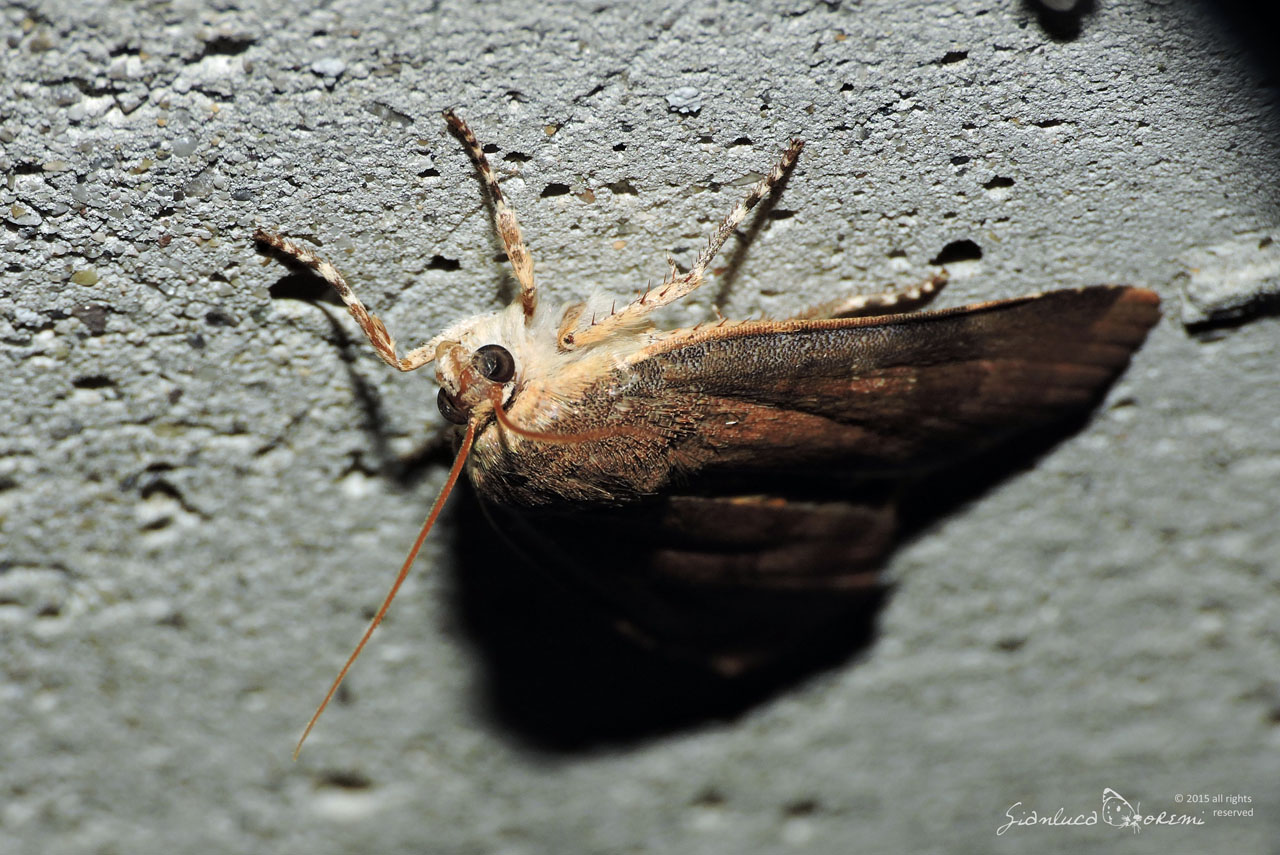
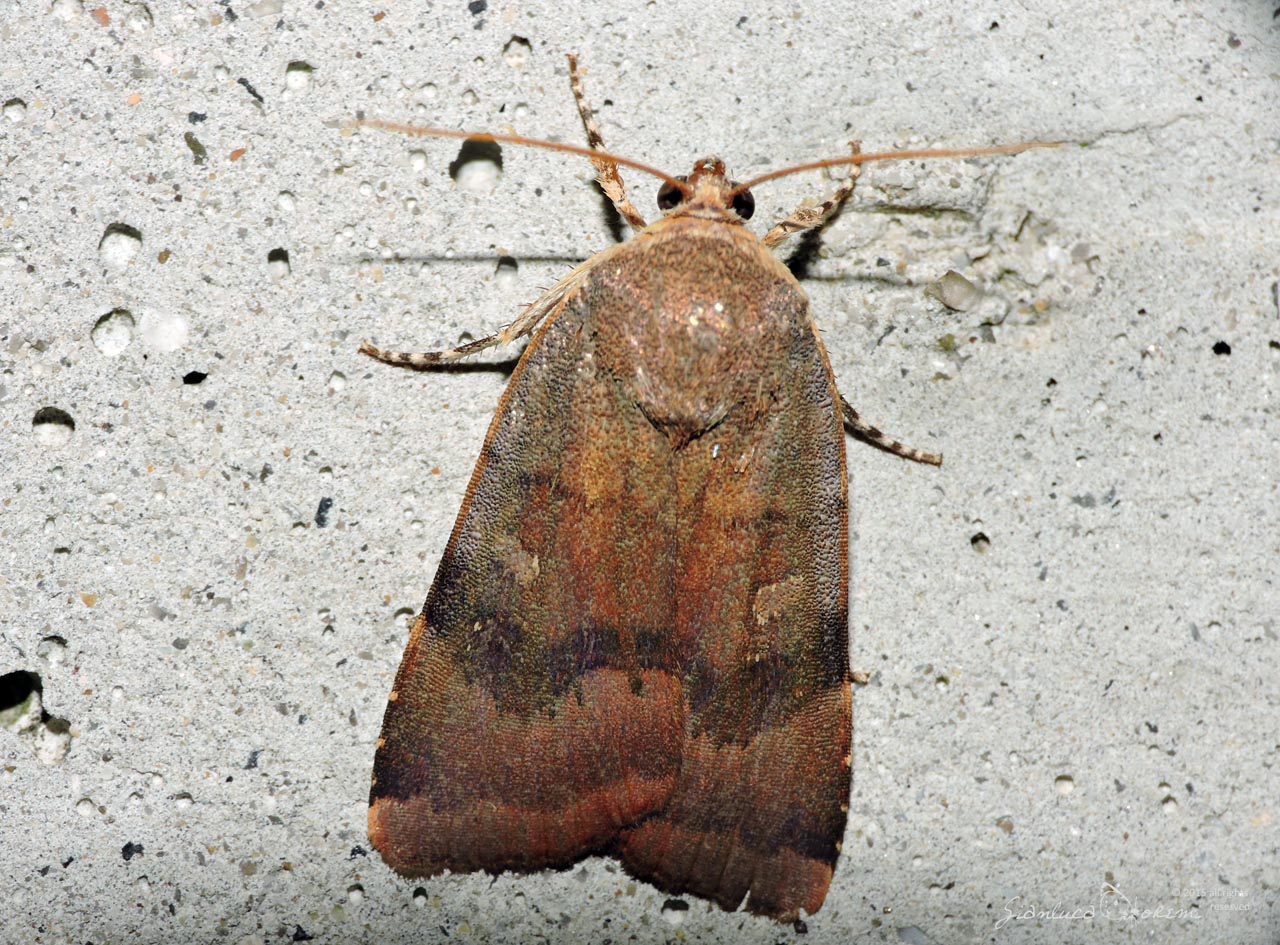
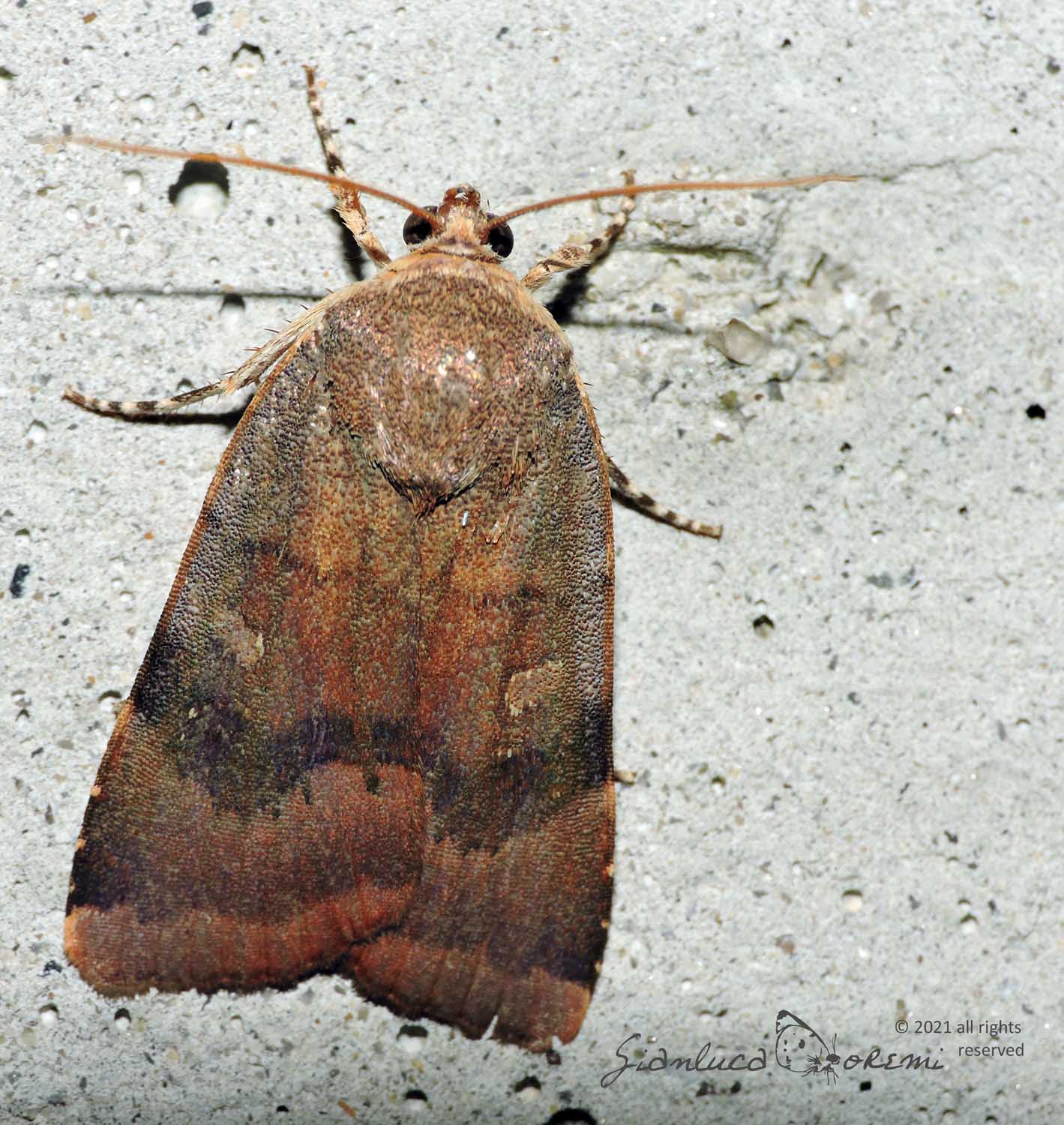
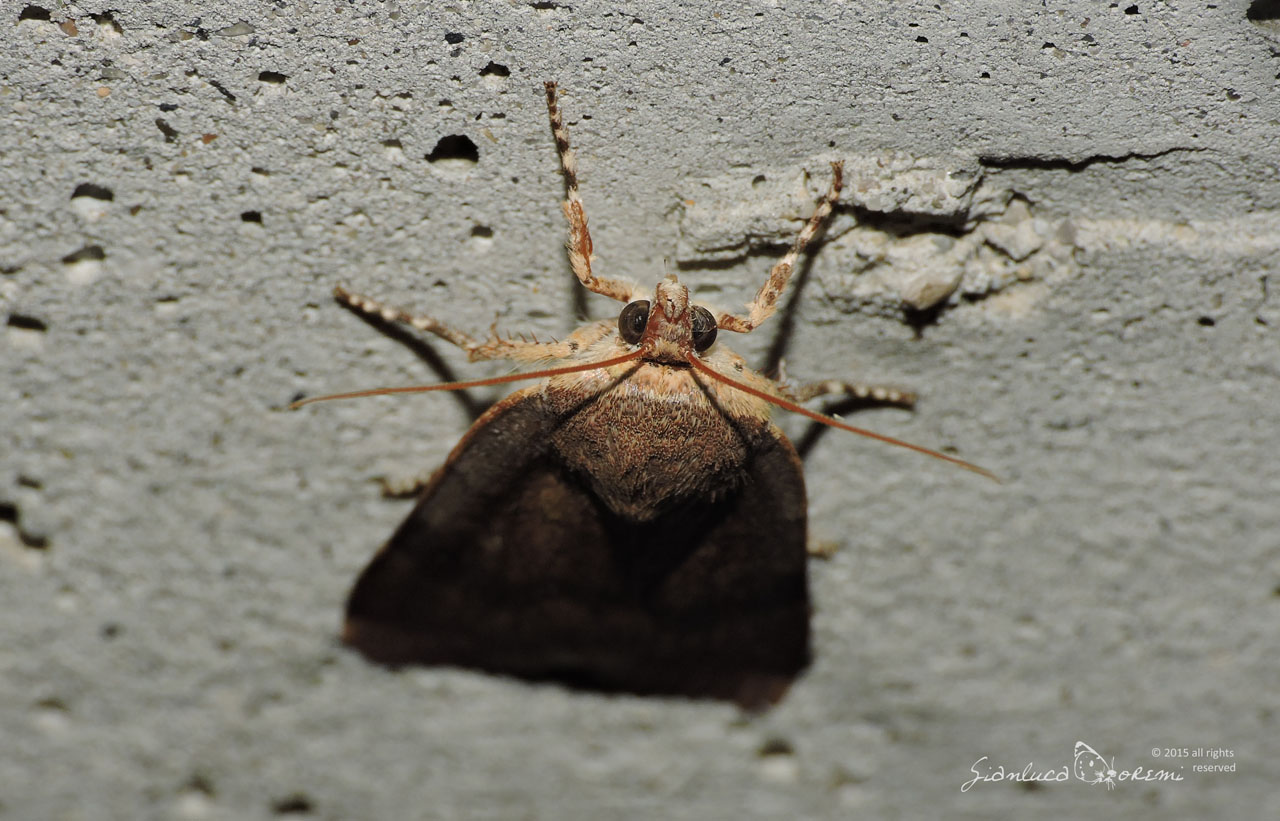
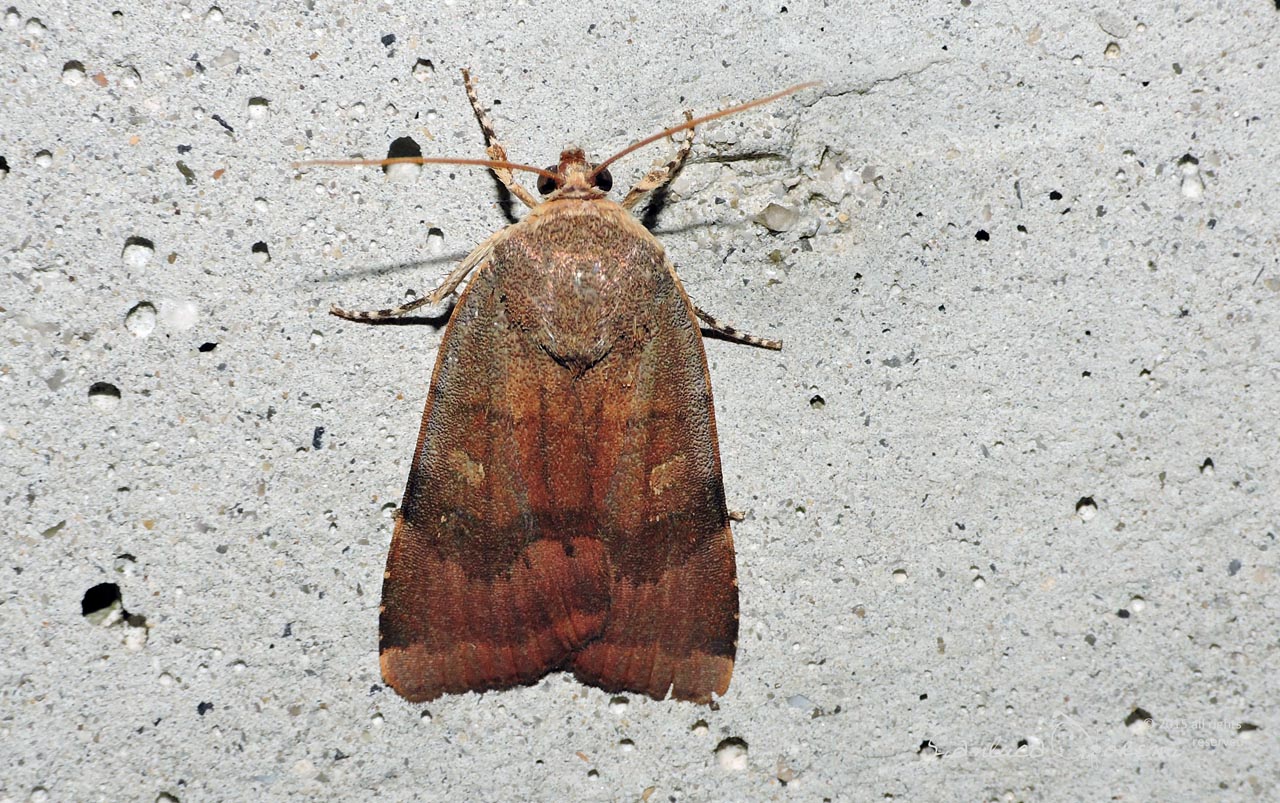

 EN
EN ITA
ITA
Social and publications